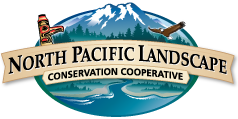Meeting Date: 3/11/2015
- 3/11/2015
Location: Anchorage, AK/Webinar
Website: Website
March 11, 2015 - 1pm (Pacific)
Li Erikson, USGS Pacific Coastal and Marine Sciences Center
Coastal regions of Alaska are regularly affected by intense storms of ocean origin, the frequency and intensity of which are expected to increase as a result of global climate change. Since at least the 1970s, minimum annual total sea-ice cover has declined and freeze-up of landfast ice has been occurring later in the year. These changes allow for greater regions of wind-sea surface drag and greater chance of late summer/early fall storms to occur before pack ice refreezes and protects the shore, potentially increasing the frequency and magnitude of storm impacts on the coast. Coastal storms have already led to severe erosion, flooding, and destruction of salt-intolerant vegetation, but to date, little quantitative information on storm-generated total water levels at the coast is available. Furthermore, because historical quantitative data is limited, estimates of future changes are difficult to evaluate without a robust understanding of past events.
This presentation provides a summary of two recent studies that partially fulfill this information gap. A suite of numerical models (Delft3D, SWAN, and XBEACH) were used in combination with reanalysis wind and sea level pressure fields to quantify historical storm surge levels, wave growth, and wave runup at two villages in the Bering Sea (Gambell and Unalakleet) and in the vicinity of a coastal lagoon in eastern Arctic Alaska (Arey Lagoon, west of Barter Island). Additionally, projections of wave conditions and storm surge levels under the influence of the ‘stabilizing’ radiative forcing scenario RCP 4.5 were estimated for the 21st century (up to the year 2100). The presentation will summarize historical trends and relative contributions of storm surge, wave runup, and astronomic tides on storm-induced water levels at the coast, as well as projected flood frequencies and extents along the margins of Arey Lagoon.
Join us in Anchorage:
Science Applications Conference Room (1st floor)
USFWS Regional Office
1011 E. Tudor Rd.
Connect to the Webinar:
1. Connect here
2. If requested, enter your name and email address.
3. If a password is required, enter the meeting password: AK!Lcc!2015
4. Click "Join".
5. Call-in: 1-866-730-5871; access code: 111111
